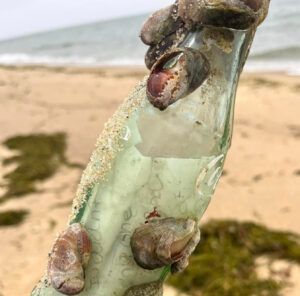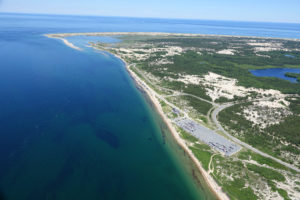WOODS HOLE – A new study led by researchers at Woods Hole Oceanographic Institution (WHOI) has furthered the scientific knowledge of viruses – on land and in the sea – and their potential to cause life-threatening illnesses.
WHOI researchers were joined by a research team from Swansea University Medical School. Their findings, which examine newly-identified genes carried by mysterious “giant” viruses, could represent potential new drug targets for giant viruses linked to human diseases.
An international team of researchers searched more than 8,000 virus genomes and found that many newly-discovered giant viruses contain multiple genes for a type of enzyme called cytochrome P450. P450 enzymes are common in animals, plants and bacteria, but finding them in new viruses is unexpected. Prior to the giant viruses, it was never considered that viruses would have these genes.
“This is an extremely interesting finding,” says biologist John Stegeman, senior author of the paper and the director of the Woods Hole Center for Oceans and Human Health at WHOI.
“In animals, P450 enzymes metabolize drugs, make steroid hormones, and defend against pollutants. We have yet to find out what they are doing in these viruses, but for sure they are unique, unlike P450s in any other organism.”
P450 enzymes, which constitute one of the largest enzyme superfamilies known, may also have major implications for understanding chemical effects both in the sea and in human disease processes.
“We know some giant viruses may be linked to some forms of pneumonia, so gaining a better understanding of them will help us to develop ways of tackling those viruses,” explains David Lamb, lead author from Swansea University Medical School in Wales, who was working on the research while at WHOI on a Fulbright Scholarship.
Viruses are the most numerous biological ‘entities’ on Earth, though giant viruses were not known until 2003, when a virus large enough to be seen with a light microscope was discovered. More than 1,000 genes were identified in that first giant virus; by comparison, the influenza virus has 14 genes. Since then, additional giant viruses with many more genes, and more P450s, have been found worldwide, some with nearly 3,000 genes. Increasingly, giant viruses are being found in the oceans, including in the deep sea.
“The P450s could represent drug targets for giant viruses thought to contribute to some pneumonias,” Stegeman says.
“Finding P450 genes and enzymes in diverse viruses opens a new window on the evolution of these important enzymes, which may help in understanding the biology and the origin of the giant viruses themselves, which currently is unknown, and hotly debated.”
Jed Goldstone (WHOI) and Alec Follmer (University of California Irvine) are co-lead authors with Lamb. Additional coauthors include: Andrew Warrilow, Claire Price, and Steven Kelly (Swansea University Medical School); Marie True and Tom Poulos (University of California Irvine); and David Nelson (University of Tennessee).
The research was supported by a USA-UK Fulbright Scholarship, grants from the Royal Society, the Boston University Superfund Research Program, European Regional Development Fund and Welsh Government Project and by National Institutes of Health and National Science Foundation grants to the Woods Hole Center for Oceans and Human Health.

























